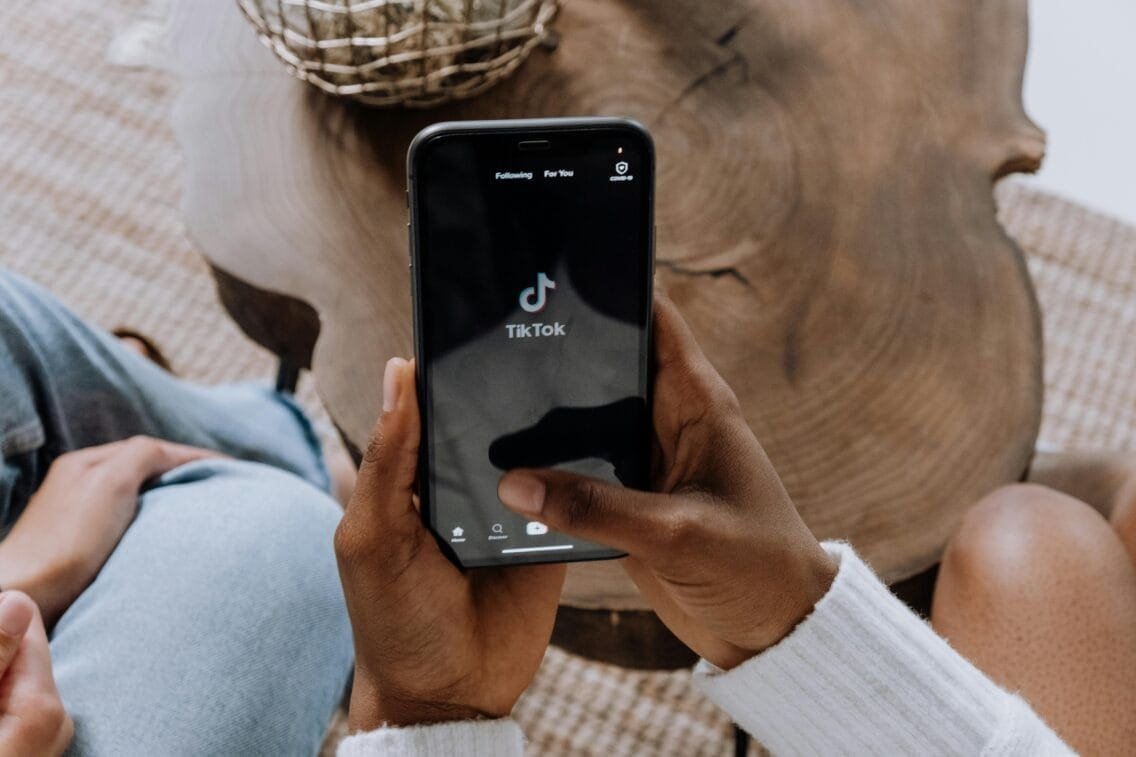What TikTok Algorithm Knows About You—And Why That’s Scary

Step 1: Open TikTok. Step 2: Watch a few videos on your For You Page. Step 3: Doomscroll for three hours straight, wondering where the time went. Step 4: Rack your brain, trying to figure out how TikTok knew exactly what you wanted to see before you even did. Step 5: Rinse and repeat.
Darling, I’m going to hold your hand when I say this: When you’re watching TikToks, TikTok’s watching you back—learning everything it can to craft a feed you can’t resist.
Most of us assume that our TikTok FYP is based on viral videos, likes and hashtags. But TikTok doesn’t guess, it observes. It watches how long you pause, what you replay, and which creators you stalk but never follow.
Each of your actions within the app feeds a psychological model that’s tailored to your behavior with surprising (and borderline concerning) accuracy.
This article breaks down how that system works, how deeply it profiles you, and whether you can ever really take back control. Short answer: Yes, because awareness is the first power move.
How the TikTok Algorithm Builds Your Profile
Most people think TikTok shows you more of what you “like.” But that’s just the start. The real signals are subtler and creepier.
TikTok’s algorithm tracks watch time obsessively.
If you linger on a video for more than a few seconds, that’s a sign of interest. Watching it again is a definite signal that you’re hooked. Pausuing in the middle might indicate a couple of things, such as confusion, curiosity, or an emotional hit.
Rewatches are one of the strongest indicators. They signal content that resonated, even if you didn’t interact with them. TikTok also calculates scroll speed. If you swipe fast through cooking videos but linger on rants about burnout, it learns what your brain finds “sticky.” Even your interaction with audio and captions gets logged.
This investigative video by The Wall Street Journal breaks down how TikTok’s algorithm works—using bots they created to reveal how the platform profiles its users.
All this collected data is processed through machine learning, which groups you with users who behave similarly to you. This cluster behavior enables TikTok to predict what might interest you next, based on what has worked for others with similar scroll habits.
The Layers of Profiling: More Than Just Interests
TikTok Is Tracking Your Emotions
TikTok doesn’t simply catalog your interests. It actively tries to read your emotional state.
Let’s say you scroll past five lighthearted videos but pause on one where someone is venting about burnout. That longer-than-average pause is enough to flag emotional resonance. Suddenly, the app suggests more emotionally charged content, whether or not you engage directly.
This feedback loop intensifies if you rewatch or linger on similar posts. Users often report their feeds aligning eerily with their feelings, even feelings they haven’t articulated.
This TikTok perfectly encapsulates that:
One of the top comments on this post, with 15.7 thousand likes, even mentioned that it feels like ‘TikTok knows what is going on in their lives’.
It’s not just about being sad or happy either. Emotional profiling can range from loneliness and nostalgia to rage or confusion. And once the algorithm catches on to that emotional baseline, it starts feeding it. Not to help you—just to keep you scrolling.
Well, what’s wrong with an app that shows videos resonating with how you feel, you ask? The thing is, TikTok doesn’t care about how you feel or what you do with those feelings. It just wants you to stay on the app and keep you scrolling for as long as humanly possible.
Your Personality Type Is Part of the Formula
TikTok also takes cues from how you consume content to map personality traits.
If you gravitate toward cozy home organization clips or videos with soft-spoken, soothing voiceovers, chances are you’ve seen lifestyle content from the likes of Nara Smith.
Gravitating toward this type of content puts you in a different bucket than someone who engages in fast-paced social commentaries from creators like Nikita Redka.
The point is: the vibe of your content reflects the vibe of you—even if you never said so out loud.
This affects what kind of creators you’re shown, how content is styled, and even how fast the editing is. The algorithm is built to serve you content that you’re most likely to like.
Demographics and Beliefs
Even if you never fill in your age, gender, or political affiliation, TikTok is guessing. Based on viewing patterns, language use, and content preference, the platform estimates your demographics.
While there’s generally nothing wrong with tailor-fitting content based on your age or location, things start to become problematic once TikTok starts picking up on your social and political leanings through passive behavior.
If you dwell on a social justice video—even if you don’t interact—TikTok logs that. Political memes and parodies such as the one below are also used to curate your feed.
What’s worse is that, according to a 2022 publication, TikTok seemed to be favoring right-wing content that pushes conservatism and harmful political beliefs.
Behavior Tracking in Action: The “Hyperpersonal” Feed
These profiling techniques result in what researchers call “hyperpersonalization.” It’s defined as the ability of algorithms to tailor content so precisely that it feels eerily spot-on.
On the bright side, this can be incredibly useful. You get content that’s relevant to your current mood, interests, or even needs. For businesses, it’s a dream! Hyper personalized feeds mean higher engagement, stronger customer loyalty, and ultimately, more revenue.
But let’s not kid ourselves, it’s not all rainbows and butterflies here.
Hyperpersonalization is creepy.
Beyond just annoying ads, this level of tracking can feel intrusive and even manipulative. It’s also been linked to the spread of harmful ideologies and raises serious concerns about data privacy.
Oh, and did I mention that it is plainly really creepy?
The discomfort with the theory that the ‘algorithm is stalking us’ has become so widespread it’s even turned into a meme: people are now joking about “altering” someone else’s algorithm—whispering things near their phone just to influence what shows up in their feed.
It’s funny, alright. But the fact that it has become so normalized that we now see it as a meme or trend is alarming in itself.
So, What Now? Do We Just Let The Algorithm Win?
Do we simply surrender to the TikTok algorithm gods and accept our fates on the lack of privacy? More importantly, can we really do something to reclaim and take control of data?
While we can’t fully outsmart TikTok’s algorithm, or any social media platforms’ for that matter, there are ways to rebalance our FYPs:
- Engage with content outside your typical zones. Like, follow, and linger on creators that bring new perspectives or calm energy. This tells the algorithm to broaden your profile.
- TikTok also provides support on how to refresh your FYP. While this is helpful, it also has limitations, as the ‘refresh’ doesn’t affect other areas of your account, such as your Following feed, profile, and ads.
- Use the “Not Interested” feature liberally. If something feels repetitive, questionable, or emotionally intense in a way you don’t want, train the algorithm like a puppy—consistent corrections matter. Don’t just scroll past. Tell it no.
- Taking breaks from the app, even just for a day or two, can also shift your FYP. Pausing your usage tells the algorithm your interests may have changed.
Or, I don’t know, maybe toss your phone away and touch some grass.
However, here’s the hard truth: full control isn’t possible. The TikTok algorithm is a black box. It adapts faster than most people realize, and it’s built to be addictive. Still, understanding its mechanics gives you power because the less you let it define you, the more you get to define what you see.
Your FYP Isn’t Neutral, and You Should Be Aware of That
I hope it’s clear by now that your TikTok FYP isn’t random. It’s a reflection of behaviors, habits, and emotional patterns you didn’t even know you were showing. TikTok isn’t just feeding you content.
It’s reading you.
The more you understand how the TikTok algorithm works, the more intentional you can be with how you use it. Recognize when your FYP is pulling you into emotional loops or content traps.
Take the wheel.
Because the algorithm is watching. The question is—are you watching back?
SOURCES:
https://buffer.com/resources/tiktok-algorithm


